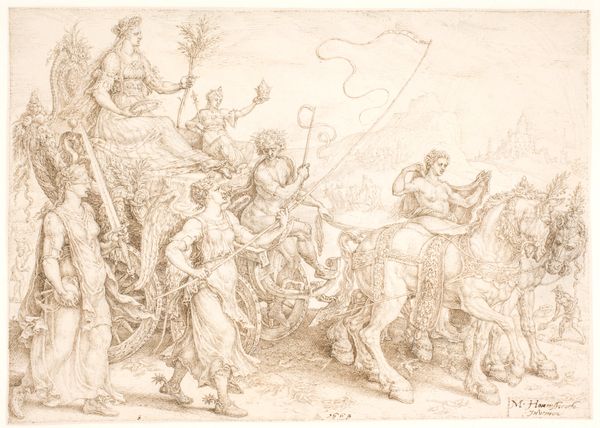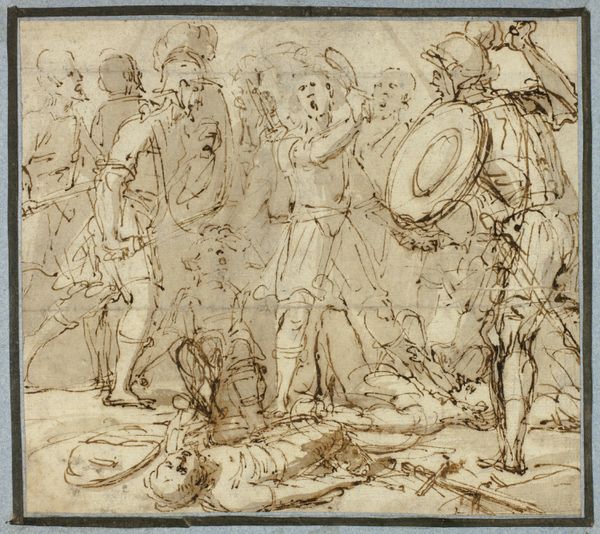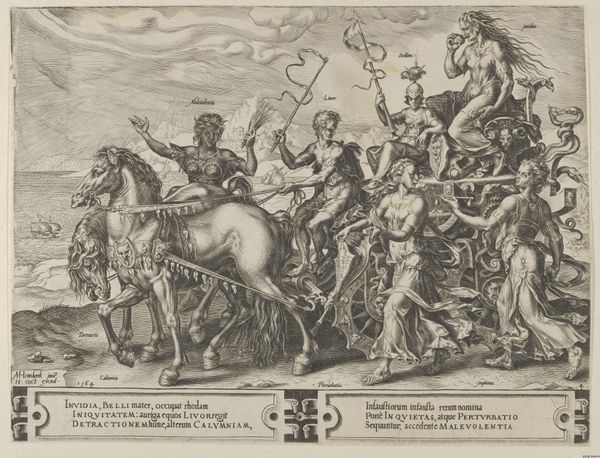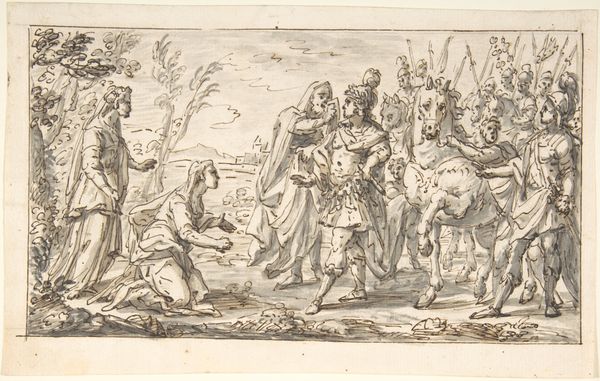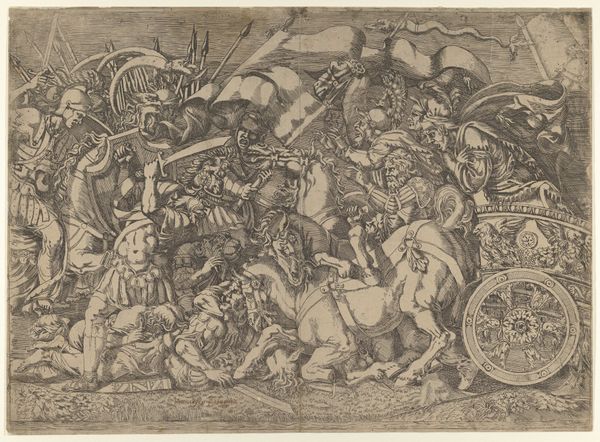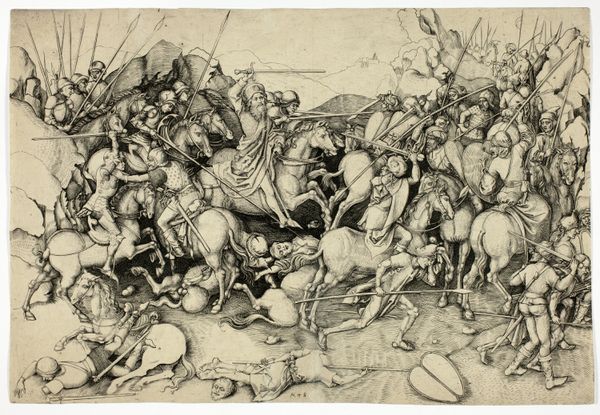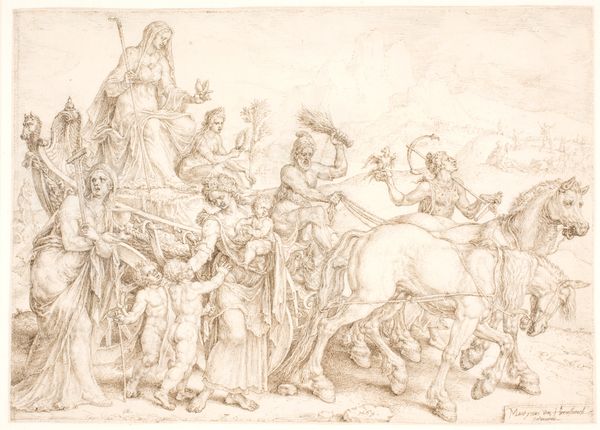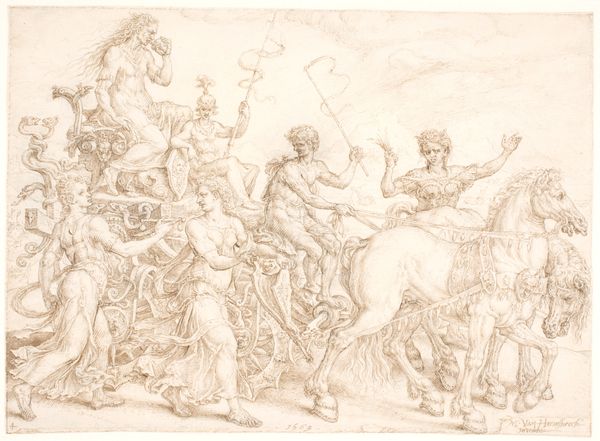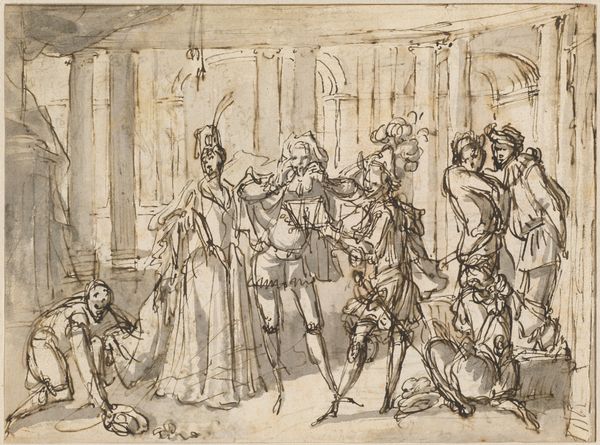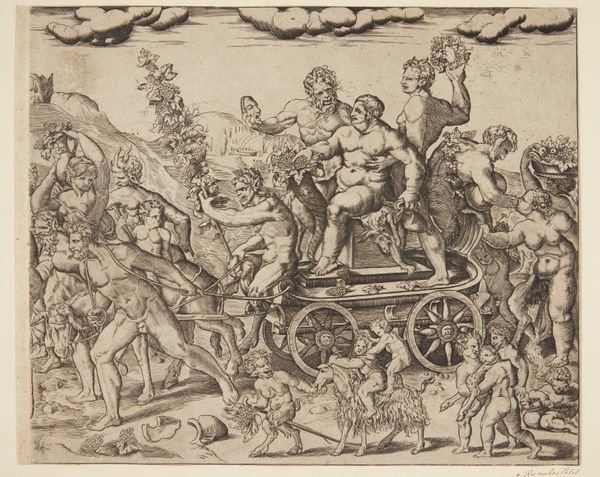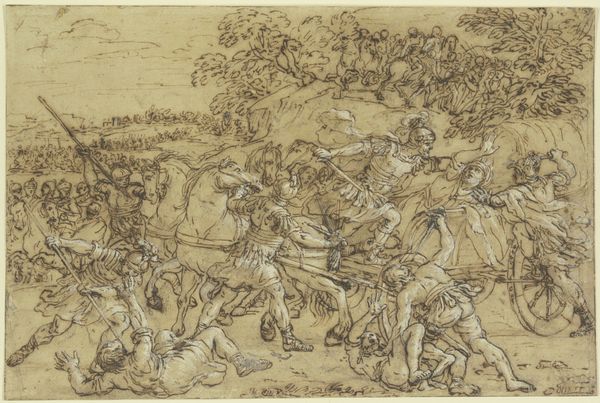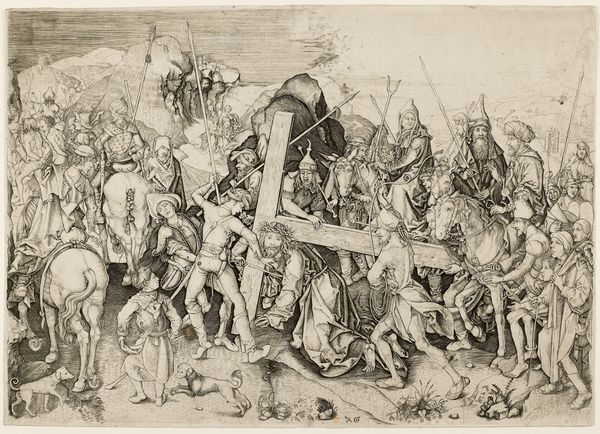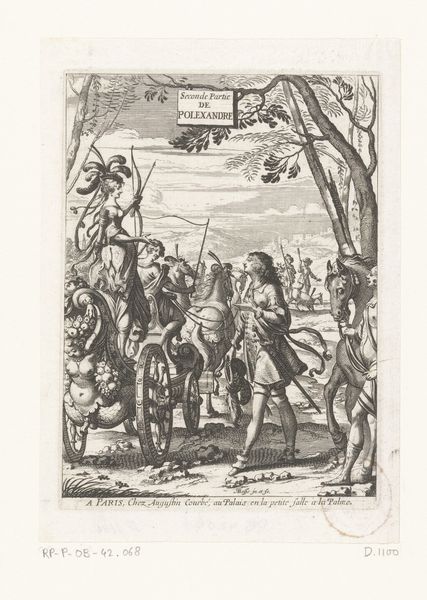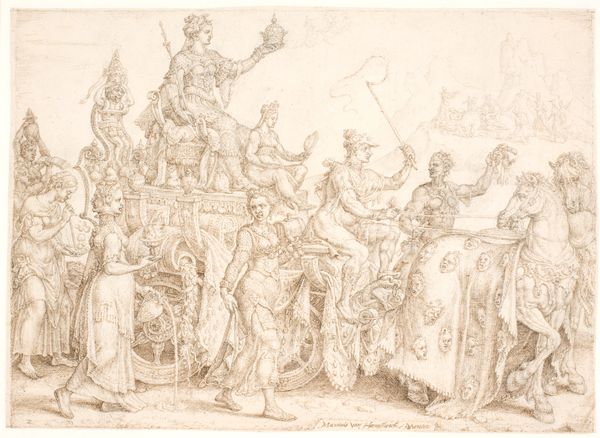
drawing, ink
#
drawing
#
narrative-art
#
asian-art
#
mannerism
#
ink
#
history-painting
Dimensions: 110 mm (height) x 145 mm (width) (bladmaal)
Editor: This is "The King of Bali," an ink drawing from 1598 by Adam Elsheimer, and it's currently in the collection of the SMK. The linear quality makes it look almost like an engraving. How do you interpret this work, considering its historical context and how it represents Balinese culture? Curator: It's fascinating to see Elsheimer tackling such an exotic subject! While titled "The King of Bali," it’s crucial to acknowledge the Mannerist style shaping this representation. How do you think this stylistic filter influenced the perception of Balinese society for European audiences? Editor: Well, the figures appear idealized, almost classical, which doesn't necessarily reflect reality, right? It’s like imposing a European standard. Curator: Exactly. We must recognize the inherent power dynamic. Elsheimer, through his art, presents a specific version of Bali to a European viewership. Consider the politics of imagery at play: what purpose did this kind of representation serve during that time? It could have been related to trade or Colonial power, do you agree? Editor: I think it could serve as a sign of colonial interests, suggesting that they were interested in Bali and how they viewed its leader at the time. Curator: Precisely. So understanding "The King of Bali" requires acknowledging the limitations of representation. Elsheimer provides not necessarily an accurate reflection of Balinese culture, but rather a document reflecting early European perceptions and potential power ambitions. Editor: This makes me rethink the relationship between the artist, the subject, and the audience, and the way the artist is documenting a leader with ink during an era of colonialism. Thanks! Curator: It's been illuminating exploring these layers together!
Comments
No comments
Be the first to comment and join the conversation on the ultimate creative platform.
